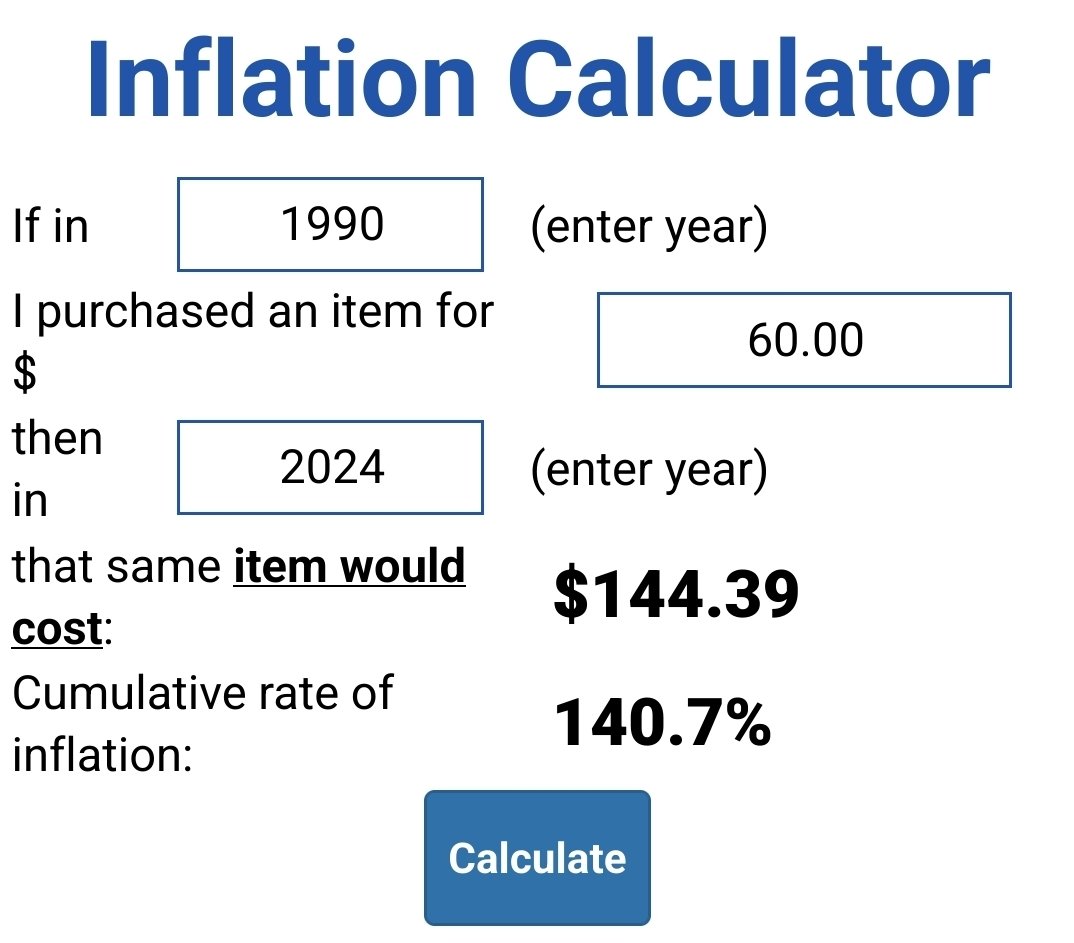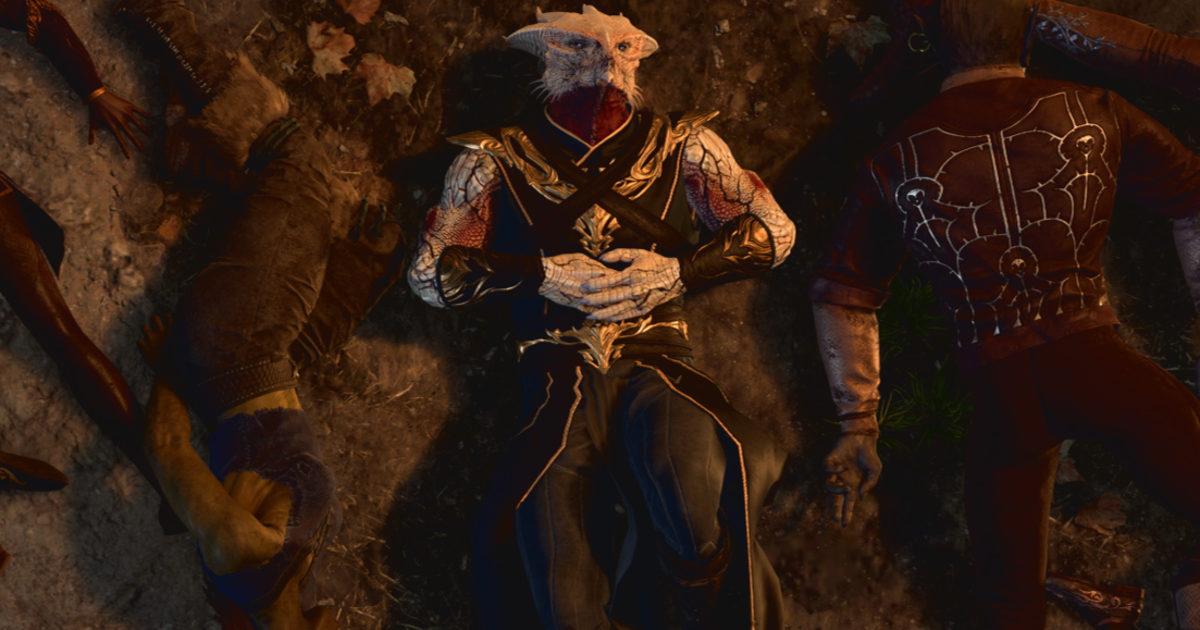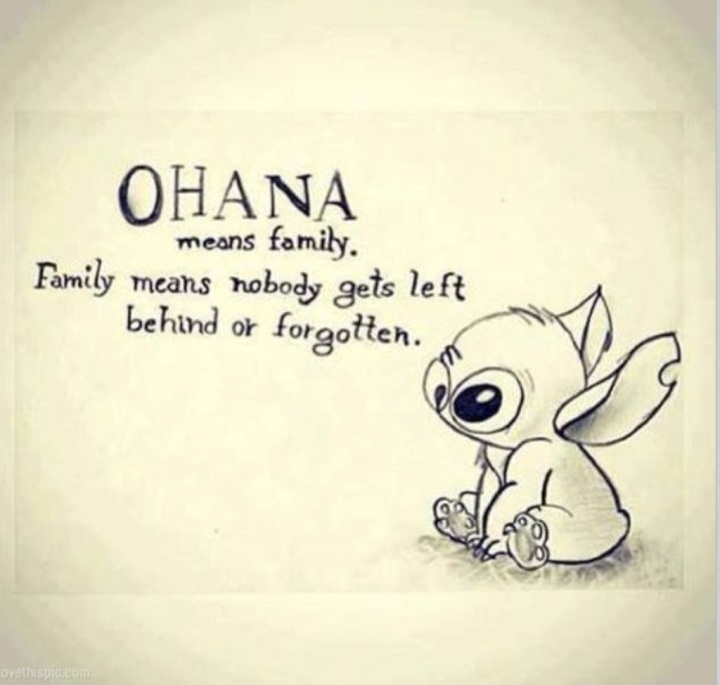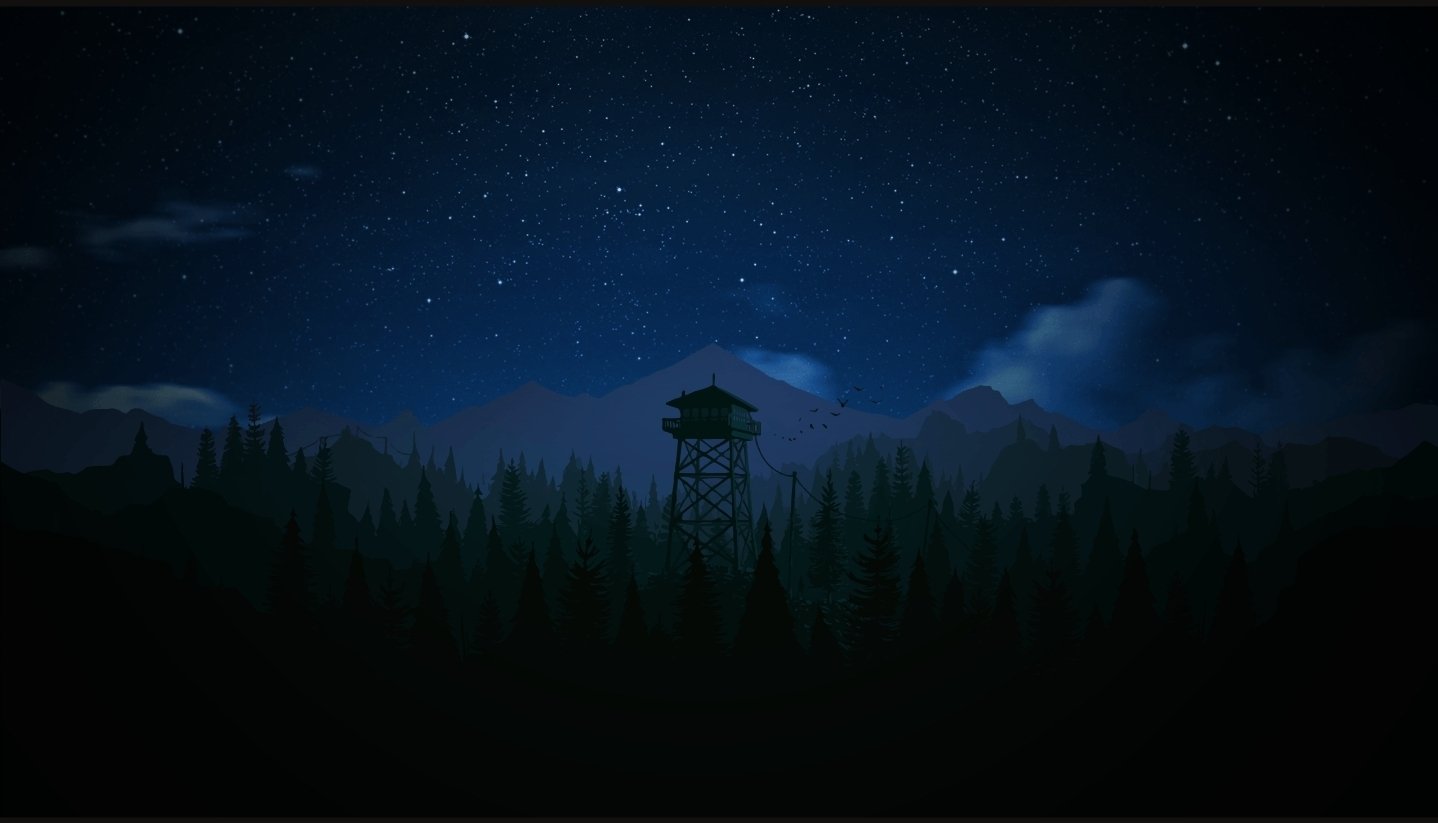Wanna save money? Cut the pay for executives!
It’s an immediate bump in profits and zero impact on the games quality.
How is this title allowed to be so misleading?
If anyone reads the article, the guy is arguing for honesty and transparency with video game prices as opposed to the multi-tiered and/or subscription based schemes that are used currently.
"‘I don’t love the artificiality of pricing structures post-retail,’ Douse wrote. ‘Use the inflated base price to upsell a subscription, and use vague content promises to inflate ultimate editions to make the base price look better. It all seems a bit dangerous and disconnected from the community.’
Douse believes games should be priced based on their ‘quality, breadth, and depth’, instead of simply being fitted to established pricing structures."
He’s saying the base price should be higher because there should only be one price.
Does he see the shit big publishers have been pumping out for years?
You would have to pay me to play half the AAA slop that comes out.
I’m almost never willing to pay current AAA game prices for a game that it’s possible I’ll be bored with after a few hours. I’d much rather spend the same amount on 3 or 4 well-reviewed indie games as the chances are I’ll get at least one game amongst them that I’ll enjoy investing my time into.
I’d be okay if we downgrade back to 2010 graphics. How much would that save ya?
BLUF: Agreed. Games don’t need realism to be fun. They need fun to be fun.
Aside from obvious genres like simulators, horror, or other niche games, graphics don’t, and shouldn’t be, the main focus of a game.
It could just be plain fun. I’d prefer games with a bunch of sandbox niche mechanics than seeing a tree in 4k upscale. Like Noita or Terraria.
Or a deep story. The original Talos Principle was alright on its graphics at the time, but it prioritized the story and puzzles. It was a fundamental game that shaped many of the philosophies I hold still today.
Graphics can be important, but I’d also prefer stylized over realistic any day. That’s why some of the older games still hold up today, graphically.
Wind Waker, the old 3d mario games, Bioshock, Oblivion (terrain, not people lol)
All had really really solid art. And it still looks good. Because it didn’t try to push the limits on making the game look real.
Back when Modern Warfare 2 released on the 360, I saw little dust clouds, and thought that it was the greatest game for realism ever at the time. The graphics were so good. Going back? Dogwater.
The 2010 style graphics would also be cheaper today, as you could get away with less optimisations and tweaks.
Video games are like the one thing that doesn’t cost too much. He’s right.
But it’s gonna stay like it is, or get hardcore capitalismed and balloon way past anything reasonable.
They already sell you games that they can remotely disable after you’ve purchased them, so I’d call that past anything reasonable.
The high base level costs aren’t due purely to development, I’d wager. How many admin staff, redundant management, petty meetings, and exorbitant costs go to overhead that could be solved with a 20 minute meeting and less triple expressos for the executive team?
Moreover, chances are we could find several issues with the flow of work around the development of the game itself. Poorly optimized communication, for the win.
I worked on a DS game back in the day, turns out the marketing budget was twice that of dev + art.
So every company is getting it wrong, including the one who made one of the highest selling games recently?
Most people here are reacting to the title. The article lays out a different idea, far more nuanced and reasonable.
Apparently we are done giving Larian the benefit of the doubt.
Not sure why heavily leaning to one side or another is so popular nowadays.
Anyway, I don’t know how individual companies do what. I don’t work for them. I don’t have insider knowledge. I do know how companies are typically structured and the traps nearly every company experiences as they grow, both in revenue and often consequently in manpower.
I’m not going to dive into it. This is a pretty easy topic to find on many search engines and Youtube where they’ll probably go more in-depth than I can with a limited attention span and two thumbs.
I have not seen a single post in this thread that implied the poster read the article and understood what the publishing director was trying say.
The post title is ridiculously misleading.

The fact so much of the games industry has latch to $60 as ‘the price’ for decades is shocking. It’s an unsustainable practice and will increasingly make companies lean more on post launch predatory practices.
That is a good point.
On the flip side, they’re not largely selling something that has any physical finiteness to it anymore, and the sales volumes have increased drastically, resulting in significantly higher profits despite a smaller inflation adjusted unit cost.The cost of a good decreasing as an industry matures feels right. Jello cost 23¢ a box in 1940. Adjusted for inflation it should cost $5.17 a box now, but it’s only $1.59.
When there’s 2 games to buy, they can be justifiably more expensive than when there’s a massive surplus.
The games are different, but it’s not like consumers can’t find a different one they’ll also enjoy if the first one they look at is too expensive.Inflation has made $60 less valuable, but they’re not selling to the same market that they were 30 years ago either.
It’s hard to use inflation to justify raising prices or adding exploitative features when you’re already seeing higher inflation adjusted profits due to a larger more accessible market, lower risk due to reduced publishing overhead, and more options for consumers, which would be expected to bring prices down.Games also sell at a much higher volume than they did back then.
Wages have also not kept up with inflation, which is why games at over 100$ would be out of reach as a casual hobby for most.
I agree with the sentiment on wages keeping up but I think ultimately the price isn’t as important as the value. I’ve bought a games for $60 that I’ve got 2k+ hrs in. That’s about 3 cents an hour, which I like to compare to a $15 dollar movie ticket that’s ~2-3 hrs of entertainment ($5-7.5 hr)
Obviously not everyone, myself included, gets that much out of each game. But if some games costed $140 but did give 2k hrs of gameplay (7 cents per hr) I wouldnt be bothered. To be clear I don’t think disposable AAA should jack up prices, but if the price reflects the value offered I see no issue.
On the volume thing I think we’ll probably start to plateau in the next 30 years w/ % of the total world pop consuming games, and inflation will continue. I only wish to point out that the eternal $60 price tag is something that probably should end in our lifetimes.
Your calculations are severely flawed. First of all not everyone has 2000hrs. to invest in games. Plus I am buying mostly single player games, and the only way to invest more time is if they have quality mods that are worth playing. Usually the main story of the games is 10-20 hours long. The rest are grind generic quests that are not fun. So 150$ divided by 15 is 10$ per hour, which as you can see is above the cinema price.
Arguing the rich deserve more money is crazy man
That is patently not what I was arguing. If they don’t raise the price past $60 they’ll just be incentivized to get it through predatory micro transactions.
And by arguing a business practice is unsustainable I’m not saying that entire industry pays employees in an equitable way.
They sell more copies.
Fuck off with this zero-dimensional analysis.
To be honest, I have only bought one or two games at full price. Most of the games I buy are having deep discounts.
Ummm, yeah, me too… Discounts…🏴☠️🦜
Ah yes the easy dev environment of the 1990s, too bad none of our game dev tooling, experts on the subject, cross platform porting difficulty, and physical delivery costs have all stayed EXACTLY the same.
While I generally agree, I think that there are some other ways that one could make games:
-
One is to just do games incrementally. Like, you buy a game, it doesn’t have a whole lot of content then buy DLC. That’s not necessarily a terrible way for things to work – it maybe means that games having trouble get cut off earlier, don’t do a Star Citizen. But it means that it’s harder to do a lot of engine development for the first release. Paradox’s games tend to look like this – they just keep putting out hundreds of dollars in expansion content for games, as long as players keep buying it. It also de-risks the game for the publisher – they don’t have so much riding on any one release. I think that that works better for some genres than others.
-
Another is live service games. I think that there are certain niches that that works for, but that that has drawbacks and on the whole, too many studios are already fighting for too few live service game players.
-
Another is just to scale down the ambition of games. I mean, maybe people don’t want really-high-production-cost games. There are good games out there that some guy made on his lonesome. Maybe people don’t want video cutscenes and such. Balatro’s a pretty good game, IMHO, and it didn’t have a huge budget.
I do think, though, that there are always going to be at least some high-budget games out there. There’s just some stuff that you can’t do as well otherwise. If you want to create a big, open-world game with a lot of human labor involved in production, it’s just going to have a lot of content, going to be expensive to make that content. Even if we figure out how to automate some of that work, do it more-cheaply, there’ll be something new that requires human labor.
-
Eh, apples to oranges.
A 60$ game today is so unlike a 60$ two or three decades ago.
No physical medium. Much larger market and (potential at least) sales volume.
Proliferation of game engines; games don’t need to ‘reinvent the wheel’ each time, or write machine code anymore.
On top of that, there’s many other revenue streams. Not that I think this model is ‘fair and good’, but look at the mobile market, where a sale cost of $0 is king.
Something to be said about ‘lower cost incentivizing bad practices’ (as the article discusses), and yeah, some games could raise their price. But it’s far fron 1-1, as ‘sales volume’ trumps ‘sale price’ in importance.
The sticker price of games is what it is. Micro transactions, subscription models, DLC, and such have all been flawed attempts at remedying this. If they increase the sticker price of games they’ll be subjecting themselves to more critical consumers, more risk averse buyers, and less movable players.
The question they have to ask is, do they feel safe rolling those dice, if their survival might otherwise depend on decreasing a game budget?
How are they not rolling in the dough by now? So much of the market has rolled over to digital, which means no secondary market.
Before you could pay $50 for a game, play it and sell it later for 10-$25 (depending on how quick you are), effectively making the price 25-$40.
The destruction of ownership rights has been profitable, but there isn’t an amount labeled “enough”
Person with objective personal financial interest in raising prices says raising prices is necessary
Let’s not pretend this capitalist trash take is a valid point. Yes, games cost more to make now.
Did games also sell over 22 million copies back then? And that’s just Steam BG3 sales, not including literally every other platform.
22M copies sounds like a very high estimate, and there are lower estimates out there, including those in line with the math you can run against their infographics and achievement data where they may have only sold under half of that.
The mention of GTA 6, out in 2025, reminds me of Take-Two Interactive CEO Strauss Zelnick’s comments from an earnings call last year that industry prices are “very, very low” versus the number of hours of playtime games offer and player perception of their value.
I’d generally agree with that, but perhaps with an asterisk on player perception of their value. I’d much rather have a 20 hour Ubisoft open world game than an 80 hour one filled with mandatory padding, but there is definitely a contingent of their customers that want there to be that padding, because they equate hours with value. The length of games has gone up a lot in the past 20 years (often to their detriment, I’d argue), and the price has moved but only barely. The games like Baldur’s Gate 3 and Elden Ring that are 100 hours long without feeling like they’re padded with busy work and checklists in order to finish them? Those games feel like I made off like a bandit at $60. Then you’ve got Hi-Fi Rush, a quality game I’d have happily paid $60 for, that you can finish in 10-15 hours, and Microsoft only charged $30 for it next to a flop like Redfall or another one of those padded games like Starfield for $70 each.
Also worth noting that lots of people like to throw out how much bigger the gaming audience is compared to back in the day as the reason why prices shouldn’t increase, but while that’s true, most of the oxygen in the room is still sucked up by only a handful of winners, and those are the games like Star Wars Outlaws selling you an ultimate edition for $150 with a season pass, because they know you’ll pay it.
The average AAA game should probably find ways to develop the game leaner and faster while still finding that value for people. I think that’s the nut Judas spent 10 years trying to crack, so we’ll see how they did next year.












